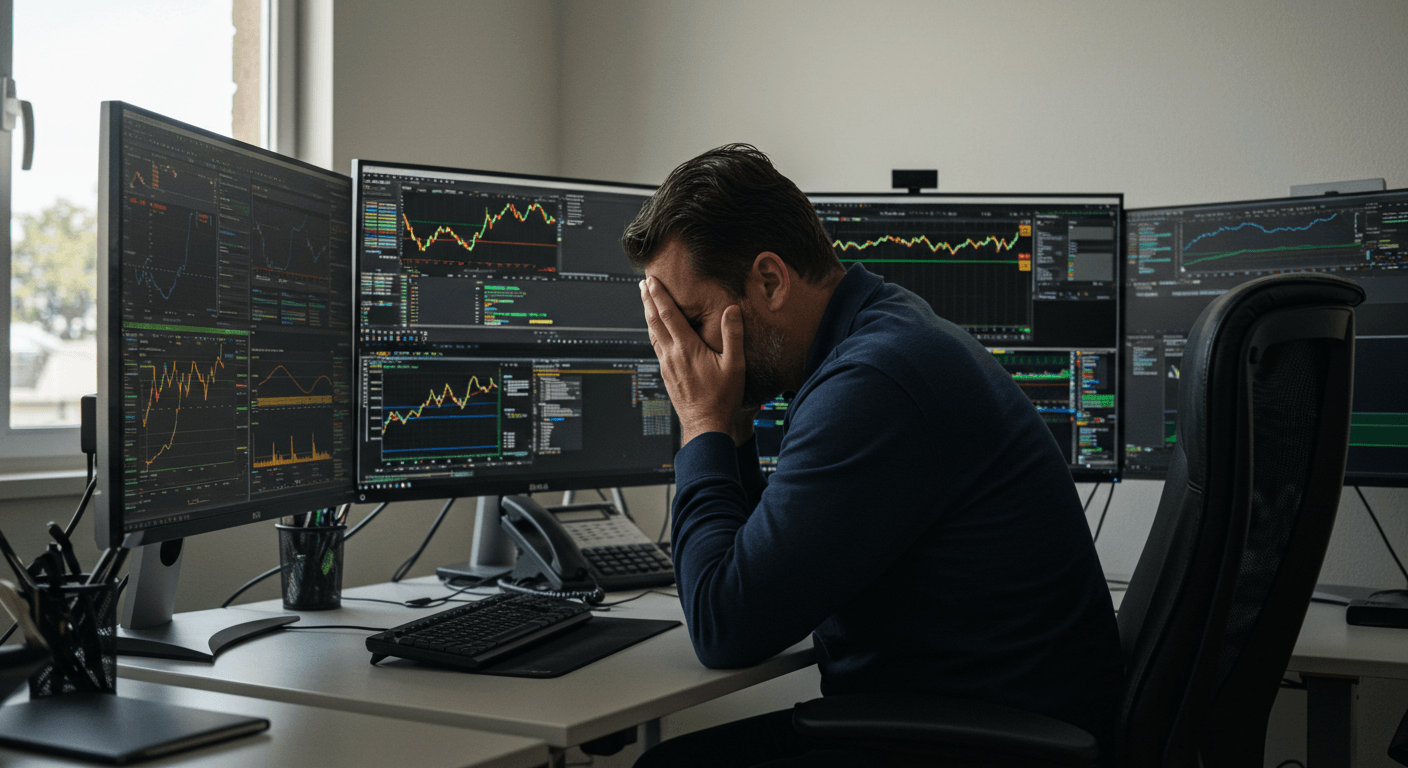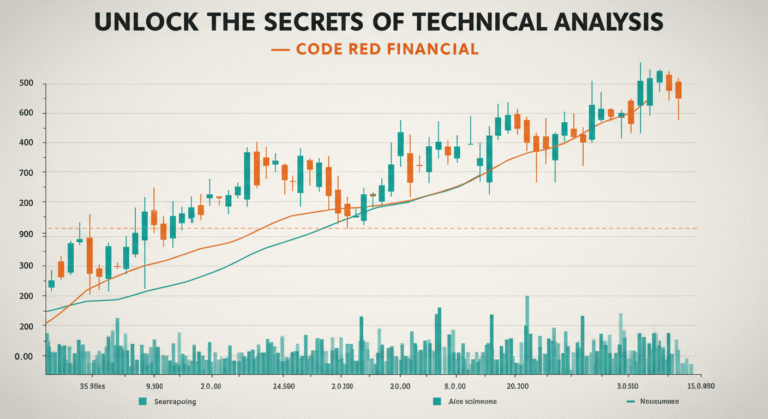
“Pitfalls to Avoid & Proven Strategies”
From time to time, I sit and reflect about the previous trading day or some investment I had made, and ever so often, I find myself just nodding my head thinking, this career is not for the weak nor the timid. Sure, anyone can trade; after all, the barriers to entry are virtually non-existent in today’s digital age. A smartphone, an internet connection, and a small amount of capital are often all it takes to open an account and place that first trade. However, for someone to choose this as their career path, to dedicate years to mastering its complexities, most certainly is perplexing to the outside observer. Because after all, it really does take a certain mentality, a unique blend of resilience, discipline, and emotional detachment, to absorb the absolute drubbing that is pretty much inevitable, and something experienced by just about all traders at various points in their journey.
We all have a battle scar or two from being a trader, don’t we? Those trades that went spectacularly wrong, the missed opportunities that haunt our thoughts, the gut-wrenching drawdowns that tested our resolve. But as the ancient Chinese proverb wisely states, “A gem cannot be polished without friction, nor can a man be perfected without trials.” These scars, these trials, are the friction that polishes the successful trader. They teach invaluable lessons, forge discipline, and ultimately shape the mindset required to navigate the turbulent waters of the market. So, the question beckons, why do we do what we do? What compels individuals to step into this arena where financial and emotional Goliaths roam freely?
The art and science of trading, just like any worthwhile career field, present exponential risks and insidious pitfalls. Yet, it also holds the allure of life-changing opportunities for the most skilled practitioners. Compared to traditional brick-and-mortar businesses, trading offers the potential for enormous payoff with significantly lower startup capital and overhead. There’s no inventory to manage, no employees (usually), no rent for physical space in the traditional sense. The scalability seems almost infinite, limited only by market liquidity and one’s own skill and capital. But what does it truly take to harness this potential? The answer lies less in complex algorithms or secret indicators and more within the intricate, often chaotic, landscape of the human mind. Let’s explore the mindset required to be a professional trader, delving into the psychological minefield we must navigate daily.
The Siren Song of the Market and the Reality of the Abyss
Why are people drawn to trading? The motivations are diverse:
- Financial Freedom: The dream of escaping the 9-to-5 grind, achieving wealth, and controlling one’s financial destiny is a powerful motivator.
- Intellectual Challenge: The market is a complex, dynamic puzzle. For many, the intellectual stimulation of analyzing data, forming hypotheses, and testing them in real-time is deeply engaging.
- Autonomy: Being your own boss, setting your own hours, and making independent decisions appeals to those with an entrepreneurial spirit.
- The Thrill: Let’s be honest, the excitement, the adrenaline rush of placing a trade and watching it move in your favor can be addictive.
However, the glittering allure often masks a harsh reality. Statistics consistently show that the vast majority of aspiring traders fail to achieve consistent profitability. Estimates vary, but often 80-95% of retail traders lose money over the long run. The low barrier to entry becomes a double-edged sword; it allows easy access but doesn’t prepare newcomers for the psychological warfare ahead. The market is a zero-sum game (or slightly negative-sum after commissions and fees). For every winner, there must be a loser. The competition includes highly sophisticated institutional players, hedge funds with vast resources, and seasoned professionals who have honed their mental game over decades.
The Brain’s Battlefield: Common Cognitive Biases in Trading
Our brains are wired with mental shortcuts (heuristics) and inherent biases that served our ancestors well in survival situations but often lead us astray in the abstract world of financial markets. Recognizing these biases is the first step towards mitigating their impact:
- Loss Aversion: Nobel laureate Daniel Kahneman’s research showed that the pain of a loss is psychologically about twice as powerful as the pleasure of an equivalent gain. This leads traders to hold onto losing positions far too long, hoping they’ll “come back to even,” while cutting winning positions too short, afraid to lose the profits they’ve already accrued. This is the fertile ground where “losing position paralysis” takes root.
- Confirmation Bias: We tend to seek out and favor information that confirms our pre-existing beliefs or hypotheses, while ignoring or dismissing information that contradicts them. If you’re bullish on a stock, you’ll gravitate towards positive news articles and analyst reports, filtering out the warnings signs.
- Anchoring Bias: We often rely too heavily on the first piece of information offered (the “anchor”) when making decisions. This could be the purchase price of a stock (refusing to sell below it, even if fundamentals have deteriorated) or a specific price target that becomes rigidly fixed in our minds.
- Herd Mentality: As social creatures, we have a strong instinct to follow the crowd. In trading, this manifests as jumping on bandwagons (like meme stocks) driven by social media hype or panic selling during market crashes simply because everyone else seems to be doing it. This often leads to buying high and selling low.
- Recency Bias: We tend to overweight recent events and extrapolate them into the future. A string of winning trades can lead to overconfidence and excessive risk-taking, while a series of losses can induce crippling fear and hesitation, causing missed opportunities.
- Outcome Bias: Judging the quality of a decision solely based on its outcome, rather than the process behind it. A poorly planned trade that accidentally resulted in a profit might reinforce bad habits, while a well-researched trade stopped out by random market noise might be wrongly judged as a bad decision.
- Gambler’s Fallacy: The mistaken belief that if something happens more frequently than normal during a given period, it will happen less frequently in the future (or vice versa). Believing a stock is “due” for a rebound after several down days, ignoring the underlying trend or news, is a classic example.
- Hindsight Bias: The tendency to see past events as having been more predictable than they actually were. (“I knew that stock was going to crash!”). This can lead to overconfidence in one’s predictive abilities.

The Emotional Rollercoaster: Fear, Greed, Hope, and Regret
Beyond cognitive biases, raw emotions are powerful forces in the trading arena:
- Fear: Fear of losing money, fear of missing out (FOMO), fear of being wrong, fear of uncertainty. Fear can cause paralysis, preventing traders from taking valid setups, or it can trigger panic selling at the worst possible times. The sprinter analogy in the original text perfectly captures this – early confidence shattered by encountering real competition (the market’s harsh realities), leading to a paralyzing fear of failure.
- Greed: The desire for excessive profits, often leading to over-leveraging, ignoring risk management rules, chasing trades, and holding onto winners for too long until they reverse (turning winners into losers). Greed whispers that this one trade will be the jackpot, overriding rational analysis.
- Hope: While seemingly positive, hope can be detrimental in trading. It’s the emotion underpinning the “prayer mode” mentioned earlier – hoping a losing trade will miraculously turn around, rather than cutting the loss according to a pre-defined plan. Hope is not a strategy.
- Regret: Regret over missed opportunities, regret over losses taken, regret over exiting too early or too late. Regret can lead to impulsive “revenge trading” – trying to immediately make back the money lost on the previous trade, often leading to even bigger losses.
Losing Position Paralysis and the Prayer Mode
Have you ever found yourself gripped by the “losing position paralysis”? That sinking feeling as a trade moves against you, the rational part of your brain screaming “Cut the loss!” while another, more primal part, freezes you in place. Yes, the inability to let go of a losing position is one of the most common and destructive trading behaviors. It’s often intertwined with the “prayer mode” – those times when, rather than relying on rational analysis or adhering to our trading plan, we start overtly speaking a prayer to ourselves or internally pleading, “Oh please ‘god’ / market / universe, let this position recover.”
If that has ever happened to you, don’t be ashamed to admit it; you are not alone. If you are like me and peruse Reddit forums like r/wallstreetbets, stock message boards on Yahoo Finance, or any other comments section within trader or investment communities, you would have read a prayer or two more than you should have. These moments starkly reflect the irrational nature that can hijack a trader’s mindset. These traits should be identified and broken. They perhaps developed based on a combination of factors, such as our past experiences (particularly painful losses), our socio-economic background, and our fundamental relationship with money and risk.
It is even possible that when our trading journey first started, we had a completely opposite view and a risk tolerance that seemed higher than Mount Everest. Perhaps fueled by beginner’s luck or sheer ignorance of the true risks involved, we felt invincible. Then reality hits. Just like in the 9th grade in a new high school, where you first thought you were the fastest 200-meter runner because you were ‘The Flash’ at your previous school, until you discovered that the competition here is at another level entirely. The initial confidence of being the supreme sprinter dissipates, transformed into a level of uncertainty you never thought possible. The crushing weight of potential loss, the fear of being wrong, becomes a lack of confidence capable of creating a perpetual parasite of self-defeating thoughts. This parasite feeds on your mental state, rendering you ineffectual. At this stage, it matters little if your analysis is top-notch or your strategy is sound, because you have managed to defeat yourself before the battle has even begun.
The Stop Loss Dilemma: Rational Tool vs. Emotional Hurdle
Listen, I have been there – the gut-wrenching feeling of impending doom as a position moves deeper into the red. And I am certainly not the only one who has experienced that crashing feeling. Of course, we have all been told, lectured, and advised to utilize stop losses to mitigate losses. Yes, it is an essential, non-negotiable tool for any serious trader or investor to implement consistently. It’s the safety net designed to prevent catastrophic losses.
However, theory often clashes with psychological reality. When irrational thoughts, fueled by fear (of taking the loss) or hope (that it will reverse just before the stop), start to wreak havoc on an otherwise objective, perhaps even quantitative, trader, the simple act of placing and respecting a stop loss becomes incredibly difficult. Our brains can become flooded with neurochemicals like dopamine (from previous wins, creating overconfidence) or cortisol (the stress hormone, inducing panic or freezing), making us illogical drones unable to execute a pre-planned, rational action. Moving the stop loss further away “just to give it more room,” canceling it altogether in a moment of desperate hope, or refusing to place one in the first place – these are all symptoms of the emotional brain overriding the rational plan. Accepting a small, planned loss triggers the pain centers highlighted by loss aversion, making it psychologically taxing, even though it’s the correct trading action.

Forging Mental Fortitude: Strategies for Navigating the Minefield
Acknowledging these challenges is crucial, but insufficient. Success requires actively implementing strategies to build mental resilience and discipline:
- Develop a Detailed Trading Plan: This is your constitution, your business plan. It must objectively define:
- Your trading strategy (setup criteria, entry signals, exit signals).
- Risk management rules (stop-loss placement, position sizing based on account risk percentage – e.g., risking no more than 1-2% of capital per trade).
- Markets traded and timeframes used.
- Your trading routine (pre-market analysis, post-market review).
- Crucially, you must commit to following it religiously.
- Master Risk Management: This is paramount. Internalize that trading is not about predicting the future; it’s about managing probabilities and risk.
- Never trade money you cannot afford to lose. This reduces emotional pressure.
- Use appropriate position sizing. Small losses should be insignificant setbacks, not account-threatening events.
- Always use stop losses. Define your maximum acceptable loss before entering a trade and stick to it.
- Understand risk-reward ratios. Only take trades where the potential profit significantly outweighs the potential loss (e.g., 2:1 or 3:1).
- Cultivate Discipline and Consistency: The best plan is useless without the discipline to execute it consistently, day in and day out, regardless of emotional state. Treat trading like a business, not a casino. Show up, follow the plan, manage risk. Repeat.
- Keep a Detailed Trading Journal: Record every trade: the setup, entry, exit, reasons for taking the trade, the outcome, and critically, your emotional state before, during, and after the trade. Reviewing this journal regularly helps identify recurring behavioral patterns, emotional triggers, and biases that need addressing. It turns subjective feelings into objective data for analysis.
- Practice Emotional Regulation:
- Mindfulness and Meditation: Techniques to observe thoughts and emotions without judgment, reducing impulsive reactions.
- Take Breaks: Step away from the screen, especially after significant wins or losses, to reset emotionally.
- Separate Self-Worth from Trading Outcomes: Your value as a person is not tied to your P&L. Wins don’t make you a genius; losses don’t make you a failure. Focus on executing your plan flawlessly; the outcomes will follow over a large sample size of trades.
- Accept Uncertainty: The market is inherently uncertain. Accept that losses are a part of the business and you cannot control every outcome. Focus on what you can control: your process, your risk, your reactions.
- Continuous Learning and Adaptation: The markets evolve, and so must the trader. Stay curious, read books, follow reputable market analysts (but think critically!), study charts, and analyze your own performance. Be willing to adapt your strategies as market conditions change, but avoid constantly system-hopping.
- Focus on the Process, Not Just Profits: Obsessing over daily P&L swings creates emotional volatility. Instead, focus on executing your trading plan flawlessly for each trade. If you follow your process consistently, profitability should emerge over time.
- Seek Mentorship or Community (Cautiously): Connecting with experienced, level-headed traders can provide valuable perspective and support. However, be wary of “get rich quick” gurus and echo chambers that reinforce bad habits (like the herd mentality).
The Lifelong Journey of the Trader
Trading is not a destination; it’s a continuous journey of learning, adaptation, and self-mastery. The psychological challenges never entirely disappear, but with awareness, discipline, and the right strategies, they can be managed. The “drubbing” and “battle scars” are not signs of failure but tuition fees paid to the market university. Each loss, if analyzed correctly through a journal, provides a lesson more valuable than any book or course.
Returning to the proverb, the friction of losses and the trials of emotional management are what polish the trader. It requires shedding ego, embracing humility, developing patience, and building unwavering discipline. It demands treating trading as a serious profession, grounded in process and risk management, rather than a hunt for lottery tickets.
The chaotic minefield of the trader’s brain is fraught with peril – biases that distort reality, emotions that hijack decision-making, and pitfalls that can drain accounts and spirits. But it is not unnavigable. By understanding the terrain, recognizing the dangers, and employing robust strategies for mental fortitude, traders can learn to traverse this challenging landscape, transforming potential psychological weaknesses into sources of strength and consistency. The path is arduous, demanding constant vigilance over one’s own mind, but for those who persevere, the rewards – both financial and personal – can be profound. It truly takes a certain mentality, one forged in the fires of market volatility and psychological self-awareness.
Disclaimer: This article is for informational purposes only and does not constitute financial or investment advice. Consult with a qualified 1 financial advisor or tax professional before making any decisions about your investments or retirement accounts.




